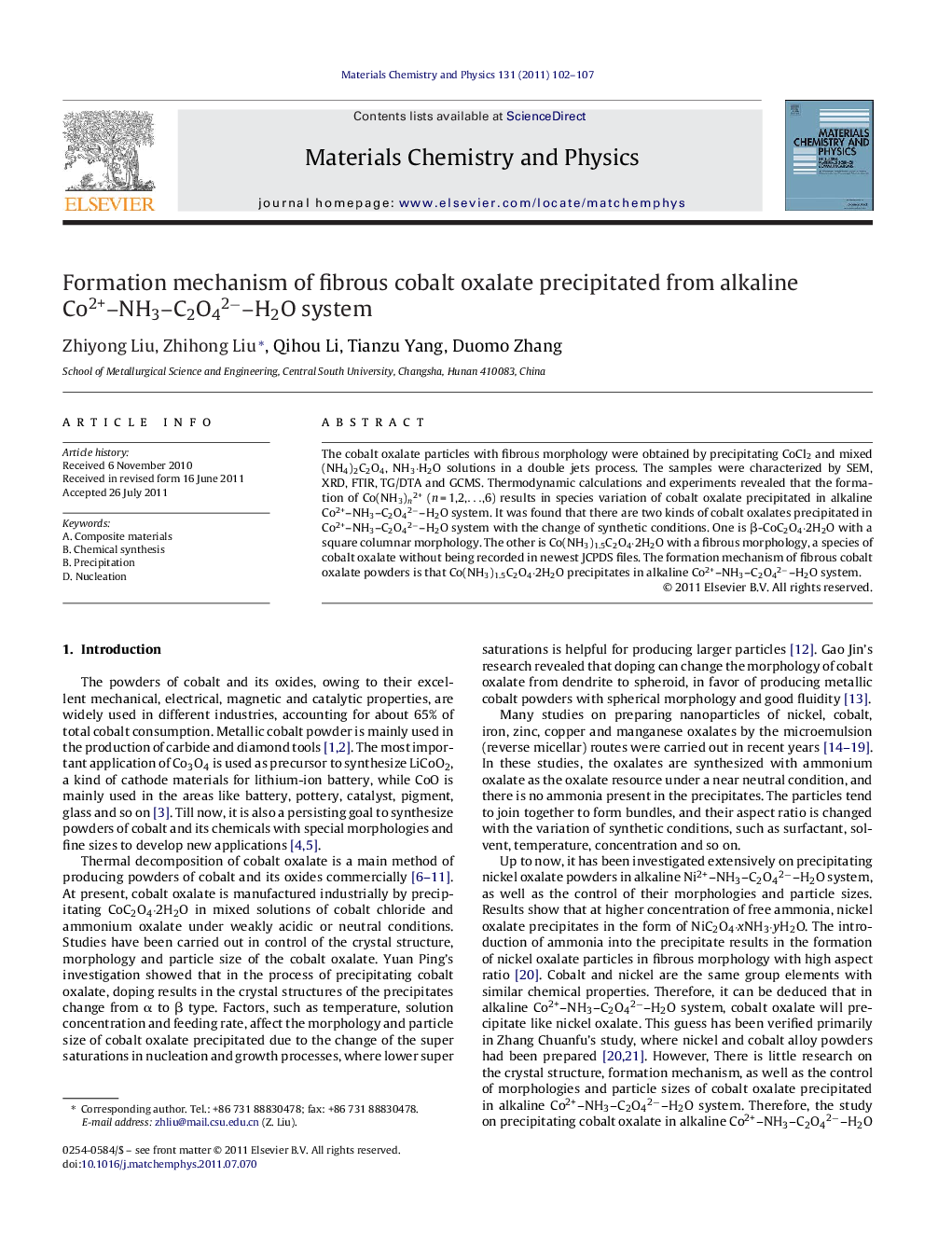| Article ID | Journal | Published Year | Pages | File Type |
|---|---|---|---|---|
| 1523897 | Materials Chemistry and Physics | 2011 | 6 Pages |
The cobalt oxalate particles with fibrous morphology were obtained by precipitating CoCl2 and mixed (NH4)2C2O4, NH3·H2O solutions in a double jets process. The samples were characterized by SEM, XRD, FTIR, TG/DTA and GCMS. Thermodynamic calculations and experiments revealed that the formation of Co(NH3)n2+ (n = 1,2,…,6) results in species variation of cobalt oxalate precipitated in alkaline Co2+–NH3–C2O42−–H2O system. It was found that there are two kinds of cobalt oxalates precipitated in Co2+–NH3–C2O42−–H2O system with the change of synthetic conditions. One is β-CoC2O4·2H2O with a square columnar morphology. The other is Co(NH3)1.5C2O4·2H2O with a fibrous morphology, a species of cobalt oxalate without being recorded in newest JCPDS files. The formation mechanism of fibrous cobalt oxalate powders is that Co(NH3)1.5C2O4·2H2O precipitates in alkaline Co2+–NH3–C2O42−–H2O system.
Graphical abstractThe cobalt oxalate particles with fibrous morphology has the lengths of 20–160 μm, widths of 0.4–6.5 μm, and aspect ratios of 24–50.Figure optionsDownload full-size imageDownload as PowerPoint slideHighlights► The cobalt oxalate particles with fibrous morphology were obtained by precipitating CoCl2 and mixed (NH4)2C2O4, NH3·H2O solutions in a double jets process. ► The samples with fibrous morphology synthesized were characterized. ► The sample is a new species that has not been recorded in JCPDS files. ► The formation mechanism of cobalt oxalate was studied.
